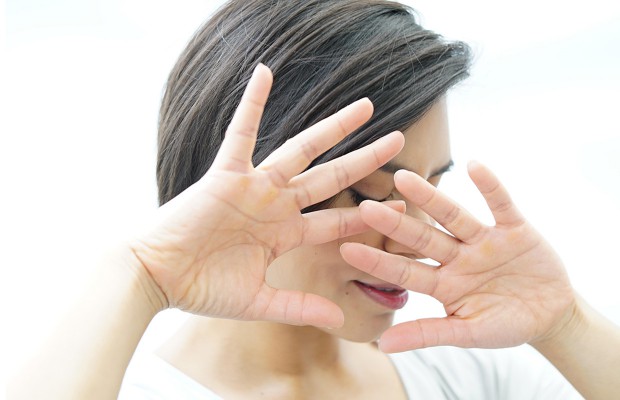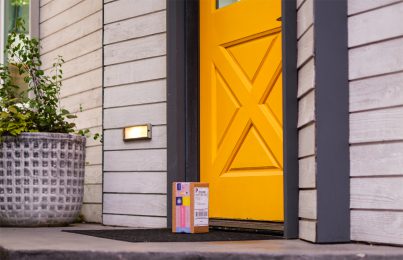Lately, there’s been a continuous rise of skin care obsessives taking to the internet to post about their newest skincare findings. Often these go viral, and everyone on social media buzzes about them. I generally tune out a lot of the chatter because I know these new discoveries disappear fairly quickly. In this post, though, I’d like to touch on a few of these most popular trends and shed some light—and common sense logic—on each of them. After all, I know a thing or two about skin, as I’m someone who has 30 years of hands-on skin care experience along with an extensive knowledge of cosmetic formulations. (I just returned from taking a cosmetic chemistry course at UCLA.) Not only are some of these trends not miracle cures, in some cases, they are actually very harmful to the skin.
For starters, let me quickly touch on the concept of trends. The skincare and beauty industry is no different than the fashion world in that things come and go. Only the tried and true, the things that actually work, stick around. In my almost 30 years in the business, I’ve seen many new ingredients and techniques promoted as “the next new miracle” only to fade away after 6-12 months. I often never hear about them again.
Currently, the natural skincare movement is very popular, but I remember when it was all the rage back in the early 90s! Eventually, more scientific products pushed them aside; people demanded better results than what the “all-natural” lines were able to deliver. (I purposefully put the words all natural in quotes because there’s no such thing as an all-natural line, despite what companies want you to believe. That’s a whole other story!)
Here are four trends (in no particular order) that you might NOT want to try at home, along with my reasoning.
Trend #1: Charcoal & Glue “Blackhead-Removing” Peel-Off Masks.
It’s a fact that people are obsessed with finding a way to permanently get rid of blackheads. Unfortunately, there is no easy way to make them go away and never come back so the search will always continue to find the latest cure. (Of course, my 3-step plan for reducing blackheads is very helpful.)
One such trend that hit big then quickly died down (thankfully!) was a DIY mask demonstrated by this, and many other, beauty vloggers. VIDEO: DIY Blackhead Remover Peel-Off Mask REMOVES EVERYTHING (She’s not kidding about that last part…)
These vloggers mix charcoal powder with glue to make what is essentially a full face version of a pore-clearing strip. But does it really clean out your blackheads?
Well, anything that sticks to the skin so aggressively and is pulled off will remove something. This is a form of physical exfoliation. In the case of this heavy duty, peel-off mask, it doesn’t really remove blackheads but it might remove the following:
- Superficial hairs – This isn’t necessarily a bad thing. After all, professional dermaplaning treatments remove unwanted peach fuzz and I love getting those done on my own skin. A glue-based, peel-off mask certainly won’t remove it all but it could pull off some hairs just the way waxing does. If you’re someone who wants to get rid of a little peach fuzz, this could be a very aggressive way to do it.
- Sebaceous filaments – These can look like blackheads but have a little hair through them (Google them). Surprisingly, they aren’t technically blackheads. After the peel-off mask is removed and you flip it over to see the “gunk” that was removed, this is usually some of what you’ll see. (Similarly to what you see when you pull off a real pore-clearing strip.)
- Dryness/dead skin cells – This definitely exfoliates the skin, which leaves it incredibly smooth. It’s a similar feeling to post-facial scrub or acid exfoliator. But again, this is an overly aggressive way of getting smooth skin.
- Live skin cells – If you’re using a prescription retinoid, retinol or taking Accutane, the skin can get very dry. As a result, a mask like this can remove the flaky, expired cells. However, it’s so strong that it can also remove live, healthy cells. This could leave your skin an oozing mess and cause scabbing and scarring. This is particularly the case when you apply a masque like this to thinner-skinned areas like under the eyes. Note: if you do ever use any kind of uber-adhesive, peel-off mask or strips, always hold the skin really tight. This lessens the pull on the skin.
- Scabs leftover from picking at blemishes – If you have any superficial scabbing from a healing blemish that you picked at or dried out with a spot treatment, this can pull it off prematurely and cause bleeding and more scarring. Again, this could take live cells with it.
As for blackhead removal, most people’s blackheads are not raised; the blackhead debris is inset slightly into the pore, not sitting readily over the top of the skin. This means that a simple peel-off mask is less likely to remove them. This common kind of blackhead is too deep to attach to the glue of the mask. Same goes for pore strips. In fact, I remember when pore clearing strips first came out. So many estheticians were nervous that they would replace professional deep pore cleansing facials and they would be out of a job. Ha! This is not the case. I still have to manually extract blackheads from almost every one of my clients. Speaking of manually extracting blackheads, you can try this SAFE DIY technique at home.
The real downside of this type of glue/charcoal mask is its potential for skin irritation. Pulling, rubbing, tugging, ripping and tearing are words that you never want to associate with a quest for healthy-looking skin. When you combine all these actions, they usually make the skin uncomfortable. By contrast, performing an at-home mask like this one is supposed to give your skin some extra love. Especially if your skin is sensitive, an aggressive mask likely won’t help your skin in any way. And an uncomfortable experience is the opposite of what you set out to have in the first place. For more evidence, check out this video of some serious suffering from one of these masks! VIDEO: The Dangers of Charcoal Blackhead Masks – Cosmopolitan
Trend #2: Making your own skincare products with ingredients found in your kitchen.
An ongoing trend in skincare, fueled by both the popular green and craft movements, is the concept of taking items found in your refrigerator and kitchen and using them on the skin. The thought of using something in its natural, unadulterated form seems to be healthy and non-toxic—right? As a skincare expert, I’m often asked by magazines and blogs to contribute homemade recipes. Whenever I do, readers love them. But is achieving clearer, healthier and younger-looking skin really as easy as using ingredients found in your kitchen? My answer is no. It’s certainly not as simple as it sounds. Actually, in some cases, it can be very irritating to the skin and is much more harmful than beneficial. Read why here.
Trend #3: Buying chemical peels on Amazon.
The internet has made almost anything available to everyone. Raw ingredient suppliers are now even selling things to the public that have typically only been accessible by industry professionals. Only people who understand their formulation complexity and proper usage should use chemical peel ingredients. This definitely doesn’t apply to all suppliers, but many are out to make a quick buck and they avoid putting safety first. What’s almost worse is that there are so many customers willing to cut corners and try professional treatments at home.
Chemical peels are at the height of their popularity since they’ve been proven to alleviate a multitude of skin issues, from acne and wrinkles to so much more. I often hear about peels gone wrong when they find their way into the hands of the uneducated. These are the people who don’t understand how important it is to use a quality, stable formulation without too low of a pH. Of course, it’s also essential to understand your Fitzpatrick’s skin type to know what effect a peel will have. Simply put, the allure of buying a $15 bottle of a potent chemical peel can do serious damage by burning your skin—not in a good way. You can see an example here. Trust me, there are so many horror stories like this. Ouch! Want a safe skin peel to use at home? Use this one. It gives amazing results when used weekly.
Trend #4: Using the double-cleansing method.
If you’re not familiar with the double cleansing trend, it was recently popularized by Korean beauty (“K-beauty”) bloggers. It’s pretty much exactly what it sounds like; you wash your skin in the evening not just once, but twice. You first use a cleansing oil or balm (oil-based cleanser) to break down makeup. Then, follow that with a water-based cleanser such as a foam or gel to deep clean the pores. Fans of this method really love it. While I do believe that heavy makeup and water-resistant sunscreen wearers could benefit from cleansing twice, I don’t agree with the type of product (a balm or an oil) being used as the first step. Read why here.
In summary, there are many other crazy things going on in the wild world of skincare and beauty. There’s a lot of misinformation out there about skin too, so here’s 35 common myths that you might be falling for. I sincerely hope that you’ll think through some of these techniques to determine if they’re worth the potential risks. Your skin is too important to have something go wrong and you don’t want to have to learn the “I won’t do that again!” lesson. One final thought. These are my personal opinions. If you’re following one of these trends and you’re loving what it does for your skin, then I’m totally cool with that. Whatever works for you!
And while I have your undivided attention, read this helpful post to understand the difference between dry and dehydrated skin. It’s really important that you know the difference!
Which skin care products are best for you? See our nine skin types or take the Skin Type Quiz and see recommended products.
Need expert advice from a licensed esthetician? Schedule a virtual consultation to get customized advice in person, over the phone or online via Skype or FaceTime.
Celebrity Esthetician & Skincare Expert
As an esthetician trained in cosmetic chemistry, Renée Rouleau has spent 30 years researching skin, educating her audience, and building an award-winning line of products. Her hands-on experience as an esthetician and trusted skin care expert has created a real-world solution — products that are formulated for nine different types of skin so your face will get exactly what it needs to look and feel its best. Trusted by celebrities, editors, bloggers, and skincare obsessives around the globe, her vast real-world knowledge and constant research are why Marie Claire calls her “the most passionate skin practitioner we know.”



